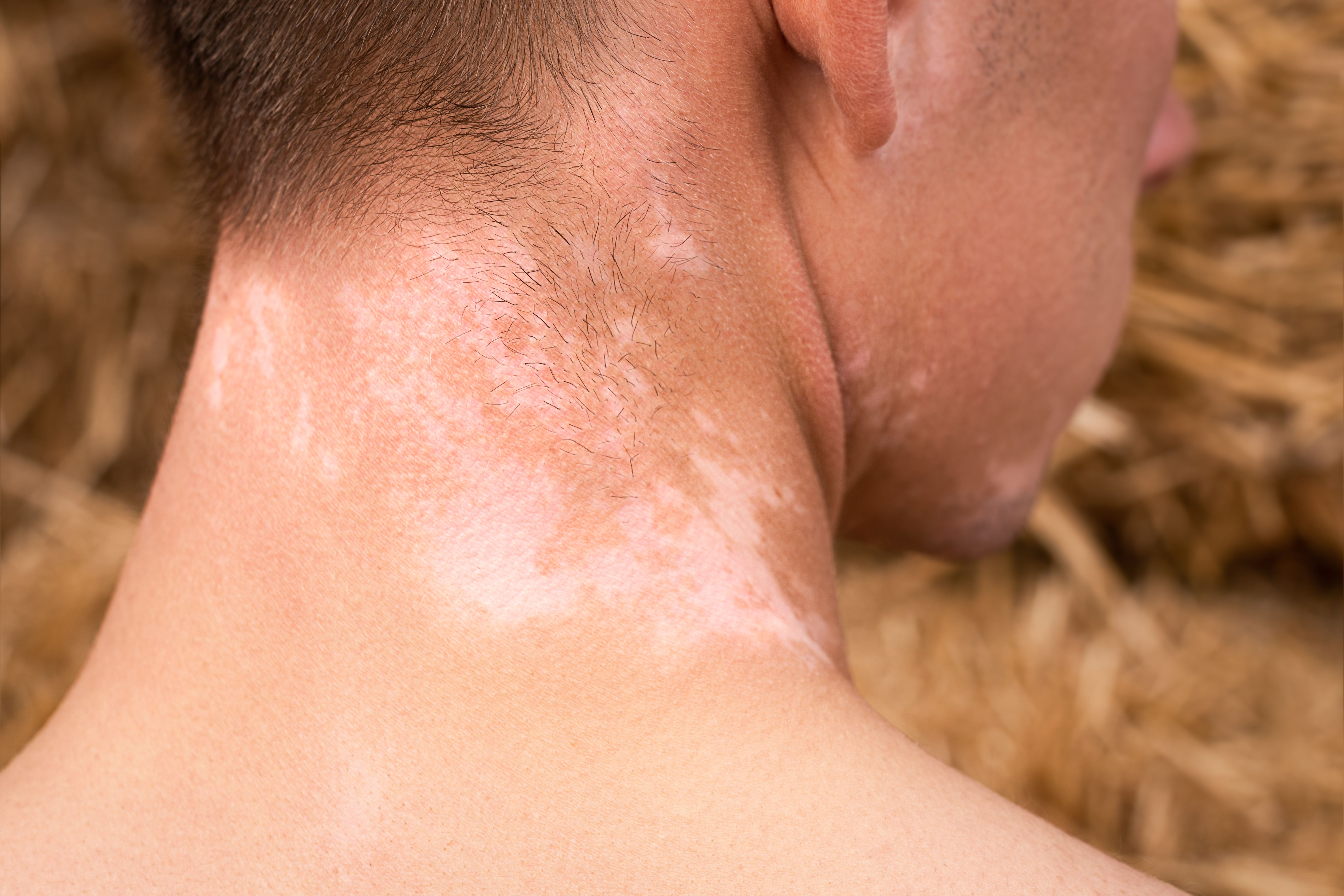- Case-Based Roundtable
- General Dermatology
- Eczema
- Chronic Hand Eczema
- Alopecia
- Aesthetics
- Vitiligo
- COVID-19
- Actinic Keratosis
- Precision Medicine and Biologics
- Rare Disease
- Wound Care
- Rosacea
- Psoriasis
- Psoriatic Arthritis
- Atopic Dermatitis
- Melasma
- NP and PA
- Skin Cancer
- Hidradenitis Suppurativa
- Drug Watch
- Pigmentary Disorders
- Acne
- Pediatric Dermatology
- Practice Management
- Prurigo Nodularis
- Buy-and-Bill
News
Article
Vitiligo Case Report: Rapid Onset of White Patches on Face, Neck, and Arms
Author(s):
Raj Chovatiya, MD, PhD, reviews a case of an adolescent patient with rapid changes in existing vitiligo.
SerPhoto/Adobe Stock

I recently saw an 18-year-old boy who was just finishing up his senior year of high school. He was a varsity football player with plans to play in college and otherwise extremely healthy without any chronic medical issues. He told me that he had noticed a couple small white patches on his face a few years ago and never thought much of it. He had been told that he had vitiligo (by other clinicians he had seen before me), and the diagnosis from a dermatology perspective was not a mystery. Given his overall light complexion, he wasn’t bothered much by the skin changes and deferred treatment.
Over the past several months prior to this visit, he began to experience rapid changes in his skin and noticed more white patches involving the skin on his face, neck, and arms. He was alarmed by these changes and was extremely worried both about his physical appearance and his overall health. He had tried topical corticosteroids, which were not effective, followed by topical tacrolimus (which was associated with stinging upon application) without much improvement, and was wondering if there was anything he could do to treat his skin. He was most afraid that any subsequent therapies may affect his ability to succeed either athletically or academically in college. Together, we talked about the clinical findings, pathogenesis, and treatment for vitiligo – as he had never thought to ask much about the disease itself, given how minimally impactful it previously was on his life. We came up with a therapeutic plan consisting of an oral mini pulse of dexamethasone transitioning into topical therapy with ruxolitinib cream, and he felt very comfortable with the reasoning behind these treatments.While he is early in his current treatment course, and thus it is hard to speak to his overall outcome, this seemingly straightforward case offers a few classic teaching points when it comes to vitiligo.
1) Not every patient desires treatment at a given point in time – recommendations should be tailored to individual needs.
2) Even though patients may know their diagnosis, never assume they understand the “ins and outs” of their disease – education is critical to get buy-in when it comes to treatment, especially newer targeted therapies.
3). Don’t forget that systemic therapy can be an important part of vitiligo therapy along with topicals – rapid vitiligo progression is one of the few times in management of inflammatory disease where oral corticosteroids can be a preferred option.






